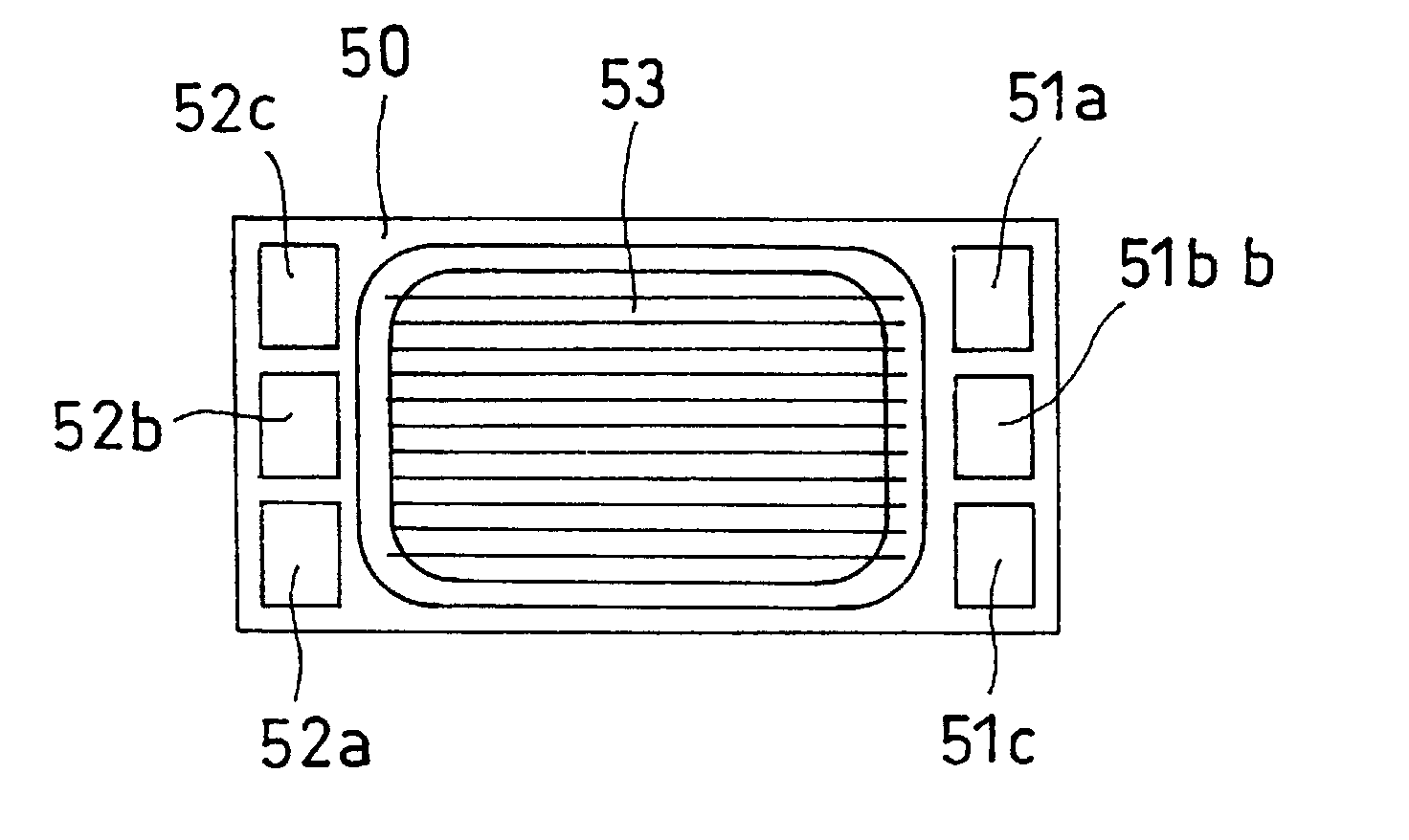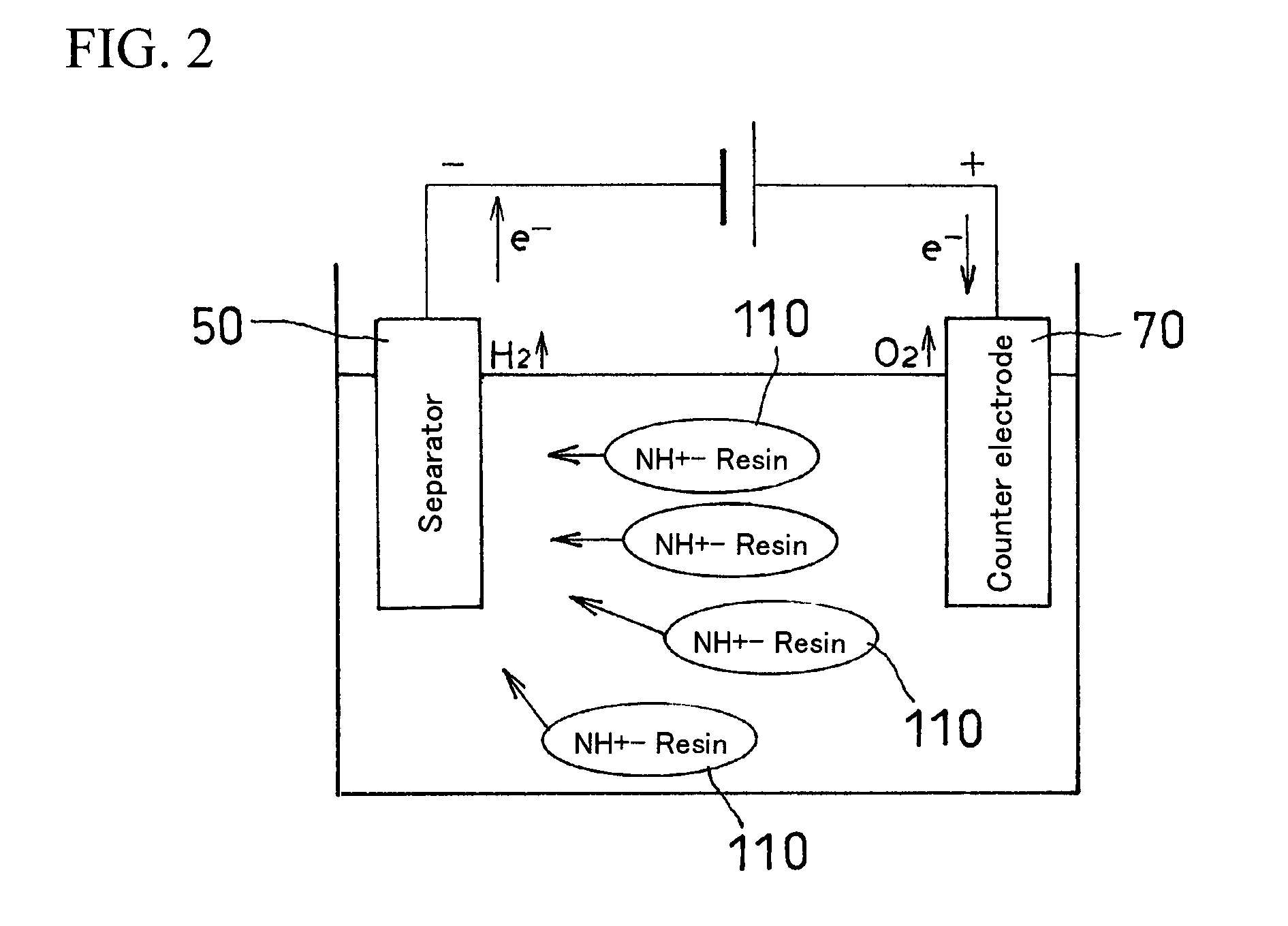Fuel cell separator and method for manufacturing the same
a technology of fuel cell separator and separator plate, which is applied in the direction of cell components, final product manufacturing, sustainable manufacturing/processing, etc., can solve the problem of limit the adhesive force obtained between the resin coating layer and its counterpart member, and achieve high corrosion resistance and seal durability.
- Summary
- Abstract
- Description
- Claims
- Application Information
AI Technical Summary
Benefits of technology
Problems solved by technology
Method used
Image
Examples
example 1
[0053]A region of gas flow channels (a conducting section) of a separator substrate made of austenitic stainless steel SUS was masked. With the masked separator substrate as a negative electrode and with a plate made of ferritic stainless steel SUS 430 as a positive electrode, the masked separator substrate was immersed in an electrodeposition bath containing a 20 mass % cationic electrocoating material (insuleed 4200: a product of Nippon Paint Co., Ltd.) that includes an aqueous polyamide imide resin, with the following conditions: a coating ratio of + / −electrodes of −1 / 2, an interelectrode distance of 15 cm, and a liquid temperature of 30° C. The voltage applied was gradually increased such that the voltage reached a predetermined level in five seconds. After having reached the predetermined level, the applied voltage was maintained for 115 to 145 seconds, so that cationic electrodeposition coating was performed. Then, the masking material was removed and baking at 200° C. was per...
example 2
[0056]A region of gas flow channels (a conducting section) of a separator substrate made of austenitic stainless steel SUS was masked. With the masked separator substrate as a negative electrode and with a plate made of ferritic stainless steel SUS 430 as a positive electrode, the masked separator substrate was immersed in three kinds of electrodeposition baths each containing a 20 mass % cationic electrocoating material (insuleed 4200: a product of Nippon Paint Co., Ltd.) that includes an aqueous polyamide imide resin, to which acrylic resin particles with a volume mean particle diameter of 50 to 100 nm accounting for 5 mass %, 10 mass %, and 15 mass %, respectively, were added as fillers, with the following conditions: a coating ratio of + / −electrodes of −1 / 2, an interelectrode distance of 15 cm, and a liquid temperature of 30° C. The voltage applied was gradually increased such that the voltage reached a predetermined level in five seconds. After having reached the predetermined ...
PUM
| Property | Measurement | Unit |
|---|---|---|
| surface roughness Ra | aaaaa | aaaaa |
| particle diameter | aaaaa | aaaaa |
| surface roughness Ra | aaaaa | aaaaa |
Abstract
Description
Claims
Application Information
 Login to View More
Login to View More - R&D
- Intellectual Property
- Life Sciences
- Materials
- Tech Scout
- Unparalleled Data Quality
- Higher Quality Content
- 60% Fewer Hallucinations
Browse by: Latest US Patents, China's latest patents, Technical Efficacy Thesaurus, Application Domain, Technology Topic, Popular Technical Reports.
© 2025 PatSnap. All rights reserved.Legal|Privacy policy|Modern Slavery Act Transparency Statement|Sitemap|About US| Contact US: help@patsnap.com



